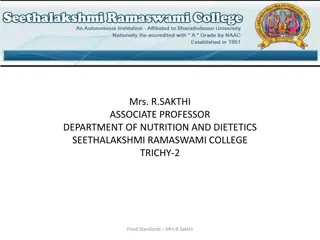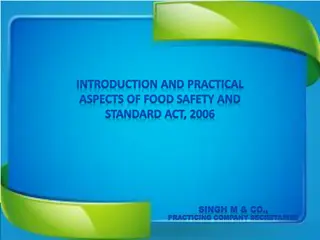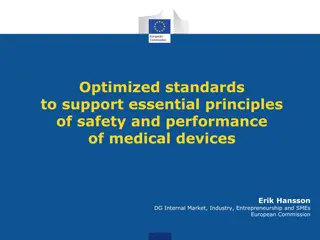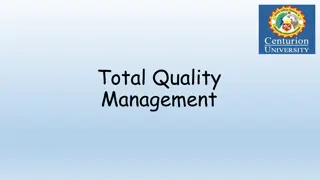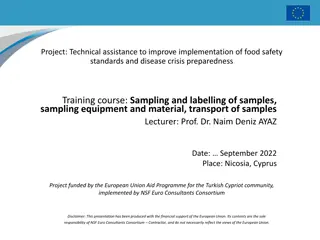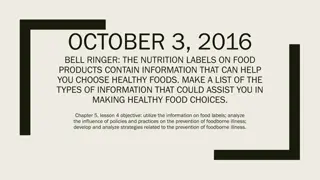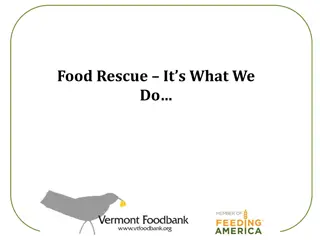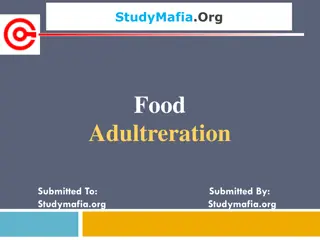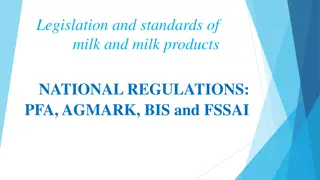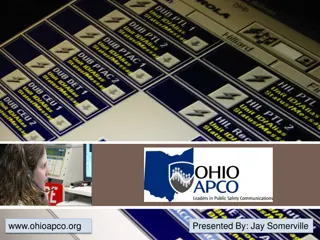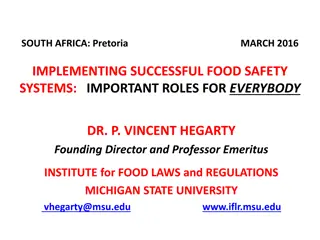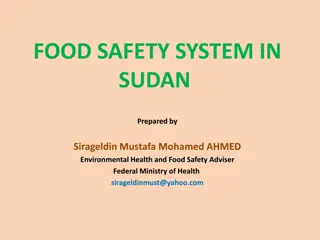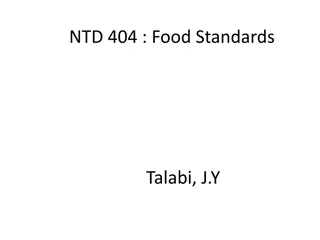Understanding Codex Alimentarius: International Standards for Food Safety
Codex Alimentarius, established by FAO and WHO, sets global standards for food safety, production, and trade. With over 180 member countries, it aims to protect consumer health and ensure fair practices. Covering diverse topics like food labeling, additives, contaminants, and more, it plays a crucial role in ensuring food safety and consumer protection on an international scale.
Download Presentation

Please find below an Image/Link to download the presentation.
The content on the website is provided AS IS for your information and personal use only. It may not be sold, licensed, or shared on other websites without obtaining consent from the author. Download presentation by click this link. If you encounter any issues during the download, it is possible that the publisher has removed the file from their server.
E N D
Presentation Transcript
Codex Alimentarius The Codex Alimentarius (Latin for "Food Code") is a collection of internationally recognized standards, guidelines, and other recommendations relating to foods, food production, and food safety codes of practice, Its name is derived from the Codex Alimentarius Austriacus. Its texts are developed and maintained by the Codex Alimentarius Commission, a body that was established in early November 1961 by the Food and Agriculture Organization of the United Nations (FAO), was joined by the World Health Organization (WHO) in June 1962, and held its first session in Rome in October 1963.
Goals Codex The Commission's main goals are to protect the health of consumers and ensure fair practices in the international food trade. The Codex Alimentarius is recognized by the World Trade Organization as an international reference point for the resolution of disputes concerning food safety and consumer protection
Member s of codex Alimentarius As of 2012, there were 186 members of the Codex Alimentarius Commission: 186 member countries and one member organization, the European Union (EU) There organizations, 150 non-governmental organizations, and 16 United Nations organizations were 215 Codex observers: 49 intergovernmental
Scope The Codex Alimentarius covers all foods, whether processed, semi- processed or raw. In addition to standards for specific foods, the Codex Alimentarius contains general standards covering matters such as food labeling, food hygiene, food additives and pesticide residues, and procedures for assessing the safety of foods derived from modern biotechnology It also contains guidelines for the management of official i.e. governmental import and export inspection and certification systems for foods. The Codex Alimentarius is published in the six official languages of the Nations: Arabic, Chinese, English, French, Spanish and Russian United
General texts Food labelling (general standard, guidelines on nutrition labelling, guidelines on labelling claims) Food additives (general standard including authorized uses, specifications for food grade chemicals) Contaminants in foods (general standard, contaminants including other mycotoxins) tolerances for specific aflatoxins radionuclides, and
Pesticide and veterinary chemical residues in foods (maximum residue limits) Risk assessment procedures for determining the safety of foods derived from biotechnology (DNA-modified plants, DNA-modified micro-organisms, allergens) Food hygiene (general principles, codes of hygienic practice in specific industries or food handling establishments, guidelines for the use of the Hazard Analysis and Critical Control Point or HACCP system) Methods of analysis and sampling
Specific standards Meat products (fresh, frozen, processed meats and poultry) Fish and fishery products (marine, fresh water and aquaculture) Milk and milk products Foods for special dietary uses (including infant formula and baby foods)
Fresh and processed vegetables, fruits, and fruit juices Cereals and derived products, dried legumes Fats, oils and derived products such as margarine Miscellaneous (chocolate, sugar, honey, mineral water food products


